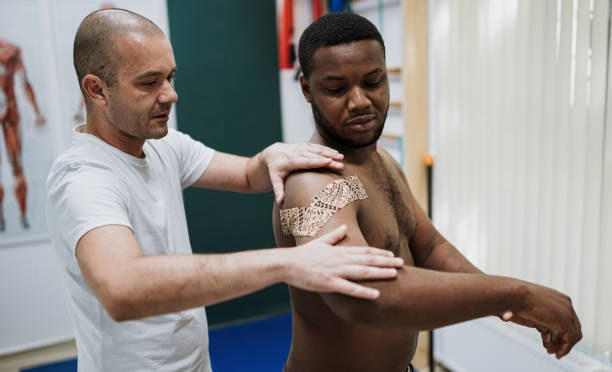In recent years, the growing concern around opioid misuse and addiction has fueled the need for safer, more sustainable pain management strategies. One of the most promising alternatives is physical therapy, or physiotherapy, which offers a non-invasive, drug-free approach to treating both acute and chronic pain. By addressing the root causes of pain—rather than merely masking the symptoms—physical therapy has become a cornerstone in efforts to reduce opioid dependency across North America and beyond.
The Opioid Crisis: A Brief Overview
Before exploring how physical therapy helps, it’s important to understand the context of the opioid crisis.
Opioids—including prescription drugs like oxycodone, hydrocodone, morphine, and fentanyl—have been widely used to manage pain. While effective in the short term, these drugs come with a high risk of addiction, tolerance, and dependency. According to the CDC, over 75% of drug overdose deaths in recent years involved an opioid. Many of these deaths were tied to prescription misuse, underscoring the urgent need for alternative pain relief options.
Physical Therapy: A Proven Alternative
Physical therapy is a science-based practice that focuses on improving mobility, restoring function, and reducing pain through movement, exercise, manual therapy, and education. Rather than suppressing pain signals like opioids do, physiotherapy targets the source of the pain—be it muscle imbalances, joint dysfunction, inflammation, or postural issues.
How It Works:
- Initial Assessment
A licensed physiotherapist evaluates the patient’s condition through physical examinations, history taking, and diagnostic tools. This helps develop a customized treatment plan. - Pain Education
Understanding the nature of pain helps patients manage it better. Therapists explain how pain works in the body, helping to reduce fear and anxiety associated with movement. - Targeted Interventions
These may include manual therapy, therapeutic exercises, joint mobilizations, heat/cold therapy, dry needling, electrical stimulation, and more. - Long-Term Management
Patients learn self-care techniques and lifestyle modifications to maintain pain relief and prevent future issues.
Key Benefits of Physical Therapy in Pain Management
1. Addresses Root Causes of Pain
While opioids mask pain, physiotherapy addresses what’s causing it. For example, chronic back pain may stem from weak core muscles or poor posture—issues that physical therapy can correct.
2. Non-Addictive
One of the most important advantages of physiotherapy is that it poses no risk of addiction, making it a safer alternative for long-term pain management.
3. Customized Treatment Plans
Unlike medications that offer a one-size-fits-all solution, physical therapy is tailored to each patient’s specific condition, lifestyle, and recovery goals.
4. Improves Mobility and Function
Chronic pain often limits movement. Physiotherapy helps improve flexibility, strength, and endurance, enabling patients to return to normal activities sooner.
5. Reduces Healthcare Costs
By reducing the reliance on medication and preventing surgical interventions, physiotherapy can be a cost-effective option for both patients and healthcare systems.
Conditions That Respond Well to Physical Therapy
Physiotherapy is effective in treating a wide range of painful conditions, including:
- Lower back pain
- Neck and shoulder pain
- Osteoarthritis
- Fibromyalgia
- Post-surgical pain
- Tendinitis
- Headaches and migraines
- Sports injuries
In many of these cases, early intervention with physical therapy can eliminate the need for opioids altogether.
Physiotherapy Abbotsford: A Local Example of Change
Communities across Canada are recognizing the value of non-pharmacological interventions for pain. In places like Physiotherapy Abbotsford, clinics are seeing an increasing number of patients seeking alternatives to medication.
Here, physiotherapists work closely with doctors, chiropractors, and mental health professionals to create holistic treatment plans. Their approach is patient-centered, combining education, physical rehabilitation, and long-term wellness strategies. This model not only helps manage pain but also empowers individuals to take control of their health.
For example, someone suffering from chronic shoulder pain might receive a combination of manual therapy, resistance training, postural correction exercises, and ergonomic advice—all tailored to their daily activities and goals.
Supporting Research and Guidelines
Multiple authoritative organizations have advocated for physical therapy as a first-line treatment for chronic pain:
- The CDC’s Guidelines for Prescribing Opioids recommend non-opioid therapies, including physical therapy, as the preferred treatment for chronic pain.
- The American Physical Therapy Association (APTA) launched the “ChoosePT” campaign, promoting physical therapy as a safe alternative to opioids.
- A study published in JAMA Internal Medicine found that patients who received physical therapy early after diagnosis for low back pain were significantly less likely to use opioids than those who did not.
Challenges to Widespread Adoption
Despite its many benefits, there are still some barriers to fully integrating physical therapy into pain management strategies:
- Insurance Limitations
Some plans offer limited coverage for physical therapy sessions, discouraging patients from pursuing long-term treatment. - Awareness
Many people are still unaware that physical therapy can be a stand-alone solution for pain management. - Delayed Referrals
Patients are often prescribed opioids before being referred to a physiotherapist, missing a critical early window for effective treatment.
Addressing these challenges through policy reform, patient education, and interprofessional collaboration is essential for creating sustainable pain management models.
Real-World Success Stories
Many patients have been able to significantly reduce or eliminate their need for opioids by embracing physical therapy. For instance, a 52-year-old woman with chronic hip pain who had been on opioids for over a year was able to wean off completely after undergoing a 10-week customized physiotherapy program. Similarly, a young athlete recovering from ACL surgery avoided post-operative opioids altogether through early intervention and structured rehab.
Clinics offering physiotherapy in Abbotsford report similar successes, highlighting that a well-designed physical therapy plan can have life-changing results.
Conclusion
As the healthcare community continues to grapple with the consequences of opioid misuse, the role of physical therapy in pain management is more vital than ever. Its evidence-based, holistic, and patient-centered approach offers a viable and sustainable alternative to prescription painkillers. Whether dealing with chronic back pain, recovering from surgery, or managing age-related joint issues, physical therapy empowers individuals to take an active role in their recovery without the risks of addiction.
For residents of British Columbia and beyond, exploring services like Physiotherapy Abbotsford can be a proactive step toward safer, long-lasting pain relief. By shifting the focus from medication to movement, we’re not just treating pain—we’re building healthier, stronger communities.








[…] provide education, encouragement, and practical solutions to make physical activity accessible and enjoyable. This might include adapting exercises to suit individual needs, setting […]